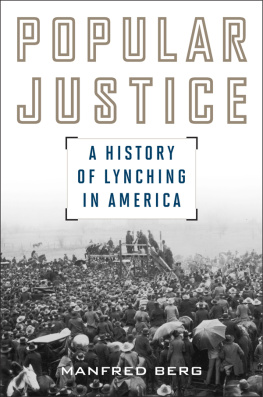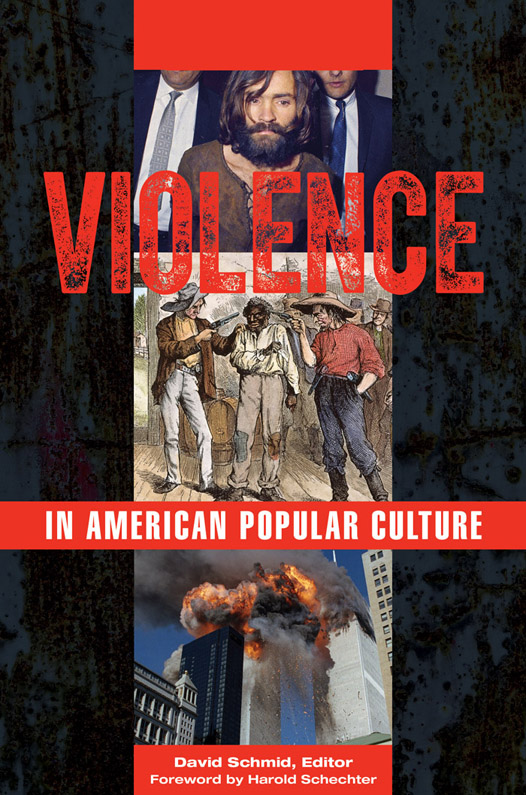David Schmid (editor) - Violence in American Popular Culture [2 volumes]
Here you can read online David Schmid (editor) - Violence in American Popular Culture [2 volumes] full text of the book (entire story) in english for free. Download pdf and epub, get meaning, cover and reviews about this ebook. year: 2015, publisher: Praeger, genre: Romance novel. Description of the work, (preface) as well as reviews are available. Best literature library LitArk.com created for fans of good reading and offers a wide selection of genres:
Romance novel
Science fiction
Adventure
Detective
Science
History
Home and family
Prose
Art
Politics
Computer
Non-fiction
Religion
Business
Children
Humor
Choose a favorite category and find really read worthwhile books. Enjoy immersion in the world of imagination, feel the emotions of the characters or learn something new for yourself, make an fascinating discovery.
- Book:Violence in American Popular Culture [2 volumes]
- Author:
- Publisher:Praeger
- Genre:
- Year:2015
- Rating:5 / 5
- Favourites:Add to favourites
- Your mark:
Violence in American Popular Culture [2 volumes]: summary, description and annotation
We offer to read an annotation, description, summary or preface (depends on what the author of the book "Violence in American Popular Culture [2 volumes]" wrote himself). If you haven't found the necessary information about the book — write in the comments, we will try to find it.
This timely collection provides a historical overview of violence in American popular culture from the Puritan era to the present and across a range of media.
Few topics are discussed more broadly today than violence in American popular culture. Unfortunately, such discussion is often unsupported by fact and lacking in historical context. This two-volume work aims to remedy that through a series of concise, detailed essays that explore why violence has always been a fundamental part of American popular culture, the ways in which it has appeared, and how the nature and expression of interest in it have changed over time.
Each volume of the collection is organized chronologically. The first focuses on violent events and phenomena in American history that have been treated across a range of popular cultural media. Topics include Native American genocide, slavery, the Civil Rights Movement, and gender violence. The second volume explores the treatment of violence in popular culture as it relates to specific genresfor example, Puritan execution sermons, dime novels, television, film, and video games. An afterword looks at the forces that influence how violence is presented, discusses what violence in pop culture tells us about American culture as a whole, and speculates about the future.
- Provides a narrative of the development of violence in American popular culture, illustrating both continuity and change
- Combines an overview of each essays subject matter with in-depth analysis of specific examples
- Features discussion of well-known portrayers of violence, such as film and television, as well as lesser-known sourcesfor example, murder ballads and Puritan sermonshelping readers place contemporary concerns and examples into a detailed historical context
- Suggests directions for future research and other developments in the field
- Includes a keyword index to enable readers to track continuities across the various essays
David Schmid (editor): author's other books
Who wrote Violence in American Popular Culture [2 volumes]? Find out the surname, the name of the author of the book and a list of all author's works by series.

![David Schmid (editor) Violence in American Popular Culture [2 volumes]](/uploads/posts/book/262757/thumbs/david-schmid-editor-violence-in-american.jpg)











